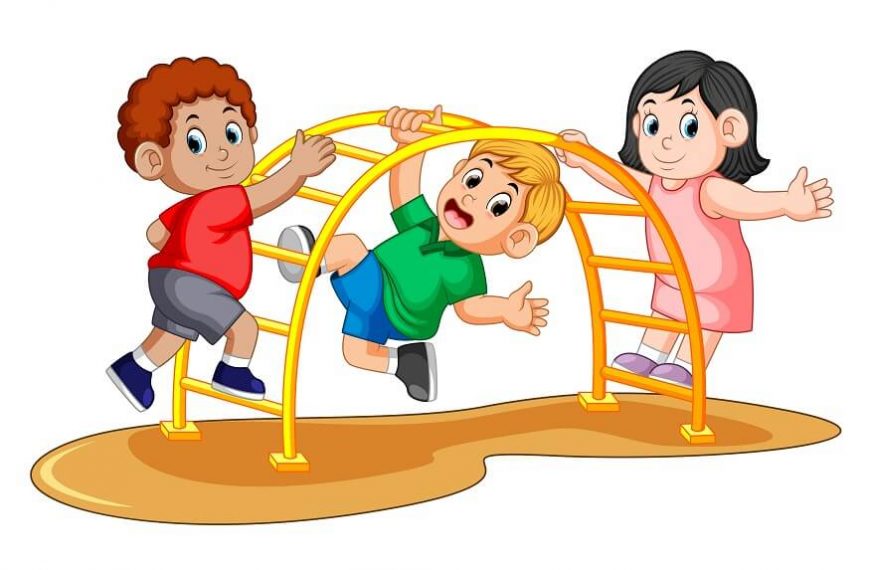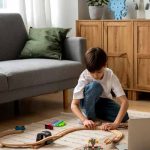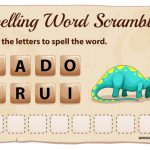Exploring Rough-and-Tumble Play
Rough-and-tumble play emerges as a fundamental and deeply enriching experience for children in the complex fabric of early childhood development. It is a colourful canvas on which they paint their physical, social, and intellectual development as well as the fundamental life lessons that will mould their futures. This type of play is much more than merely frolicking enjoyment and is frequently characterised by exuberant wrestling, playful chasing, and vigorous roughhousing. It serves as a crucial medium for kids to explore and comprehend their surroundings.
Play that involves roughhousing serves as a dynamic laboratory for a child’s growing body from a physical perspective. Children develop their motor skills through these loud encounters, as well as coordination, balance, and physical self-assurance. A solid foundation is created for increasingly difficult physical pursuits as they get older with each tumble and playful wrestle. In addition, these lively interactions imprint the value of social interaction in their developing minds. Children develop their ability to set boundaries, respect consent, and successfully negotiate the complex dance of social interaction in the sandbox of physical play.
It is impossible to overestimate the importance of rough-and-tumble play in early childhood development. It acts as a setting where children’s physical, social, cognitive, and emotional elements smoothly meet, enabling them to develop into well-rounded people. A foundation for success, resilience, and lifetime learning is given to children by parents and other adults who support and encourage this type of play. Children create their present as well as the hope for a better, more secure future in the exuberant cacophony of rough play.
What Is Rough-and-Tumble Play?
Rough-and-tumble play, sometimes known as “tumble time play,” is a sort of physical play in which kids wrestle, chase after one other, and fight for fun. Children enthusiastically experiment with physical relationships with their classmates in this environment, which is characterised by its lively and vivacious nature. Young children naturally and instinctually engage in this type of play.
- A Haven for Rough Play: The Tumble Time Play Area
- Physical Progress
- Development of Social and Emotional Skills
- Cognitive Progress
- Strengthening Resilience
Play areas for rough-and-tumble play are particularly created locations that meet their specific needs. These spaces offer a secure and supervised setting where kids can play physically without taking unneeded risks. The best environment for kids to discover their physical abilities is provided by tumble time play areas, which have soft surfaces, padded obstacles, and equipment that is age-appropriate. Typically, trained carers or educators who are in charge of these play areas make sure that the play is both safe and beneficial. These environments are created so that kids can develop crucial abilities like balance, coordination, and self-control while having fun.
Young children’s physical development depends on rough-and-tumble play. Children improve their gross motor abilities, develop strength, and increase their endurance through activities like tumbling, jumping, and running. As kids develop, these physical skills serve as the building blocks for increasingly complicated movements and activities.
The impact of rough-and-tumble play on social and emotional development is one of the most important advantages. Children learn about limits, permission, and collaboration as they playfully wrestle or chase one another. They learn to empathise with and comprehend the emotions and acts of their peers. Children learn dispute-resolution skills and how to bargain with others through this kind of play.
Playing rough and tumble provides advantages for cognitive growth in addition to physical and social development. Children negotiate the dynamic nature of these activities by using their problem-solving abilities. They develop the ability to foresee actions and reactions, which improves their capacity for making quick decisions.
Playing rough and tumble helps kids develop resilience and self-assurance. They gain the ability to push themselves, take calculated risks, and conquer physical obstacles. They are more able to overcome obstacles and disappointments with greater assurance thanks to their resilience, which also flows over into other facets of their lives.
Rough-and-tumble play emerges as a fundamental and deeply enriching experience for children in the complex fabric of early childhood development. It is a colourful canvas on which they paint their physical, social, and intellectual development as well as the fundamental life lessons that will mould their futures. This type of play is much more than merely frolicking enjoyment and is frequently characterised by exuberant wrestling, playful chasing, and vigorous roughhousing. It serves as a crucial medium for kids to explore and comprehend their surroundings.
Rough-and-tumble play serves as a dynamic laboratory for a child’s growing body from a physical standpoint. Children develop coordination, balance, and physical self-confidence through these noisy encounters in addition to their motor abilities. Each tumble and amusing fight acts as a building brick, creating a solid basis for more difficult physical activities when they get older. Furthermore, throughout these lively interactions, the value of social interaction is ingrained in their developing minds. Children master the art of establishing boundaries, recognising consent, and navigating the complex dance of social interaction in the sandbox of physical play. These fundamental life skills are woven into their character, setting them up for successful relationships and teamwork as they get older.
Beyond the physical and social aspects, rough-and-tumble play fosters the development of the brain. Children must predict the movements of their playmates, plan their moves, and quickly adjust to changing circumstances, making it a playground for problem-solving and rapid thinking. Through these lively interactions, cognitive agility is created, which leads to improved critical thinking abilities and the capacity for making wise decisions later in life. Furthermore, physical play helps kids develop resilience and self-confidence because it teaches them to take calculated risks, get over minor losses, and enjoy even the smallest wins. They develop the critical skill of believing they can take on obstacles head-on, which will provide them strength as they continue their lifelong journey of development and self-discovery.
In conclusion, it is impossible to exaggerate the importance of rough-and-tumble play for young children’s growth. It acts as a setting where children’s physical, social, cognitive, and emotional elements smoothly meet, enabling them to develop into well-rounded people. A foundation for success, resilience, and lifetime learning is given to children by parents and other adults who support and encourage this type of play. Children create their present as well as the hope for a better, more secure future in the exuberant cacophony of rough play.
So allow the happy sounds of kids playing to permeate your house and your heart. Encourage kids to enjoy rough-and-tumble play since it is during these times of play that children learn, develop, and set the groundwork for a happy and secure future.
Think about sending your kid to EuroKids. Our devoted team and carefully planned play areas offer the ideal environment for your child’s growth. To find out more about our programmes and locations, visit our website right away.















